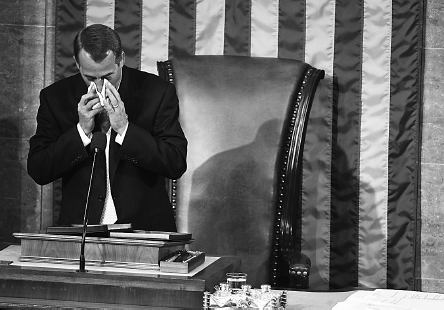Social Identity and Intergroup Communication
Social Identity and Intergroup Communication
Page 64
Clearly, our group memberships strongly influence our communication. This point is further illustrated and clarified by two concepts: social identity theory and intergroup communication. According to social identity theory, you have a personal identity, which is your sense of your unique individual personality, and you have a social identity, the part of your self-concept that comes from your group memberships (Tajfel & Turner, 1986). We divide ourselves into “us” and “them” partly based on our affiliations with various co-cultures. The groups with which we identify and to which we feel we belong are our ingroups; those we define as “others” are outgroups. We want “us” to be distinct and better than “them,” so we continually compare our co-cultures to others in the hope that we are part of the “winning” teams.
Studies in intergroup communication, a branch of the discipline that focuses on how communication within and between groups affects relationships, find that these comparisons powerfully affect our communication (Giles, Reid, & Harwood, 2010; Pagotto, Voci, & Maculan, 2010). For example, group members often use specialized language and nonverbal behaviors to reveal group membership status to others (Bourhis, 1985). So, a doctor might use a lot of technical medical terms when with nurses to assert her authority as a doctor. The Chicago Bears fan proudly wears her team jersey on game day, while her husband and children proudly don their Dallas Cowboys T-shirts.

Our group identification and communication shift depending on which group membership is made salient—or brought to mind—at a given moment. For example, students often consider themselves ingroup members with fellow students and outgroup members with nonstudents. However, students from different schools might also identify themselves in smaller units: for example, community college students might consider themselves outgroups from students attending a four-year university. At the same time, if all of these students discovered that they’re rabid fans of the Hunger Games trilogy or that they volunteered for Habitat for Humanity, they might see each other as ingroup members in relation to these interests and experiences.
In addition, your group memberships are not all equally salient for you at any given time, and your communication reflects this. For instance, suppose you are a Latina Catholic from a middle-class family and a straight-A student with a love of languages and a passion for outdoor adventure sports. When displaying who “you” are, you may emphasize your “studentness” (by wearing your college insignia) and sports enthusiasm (by participating actively in sporting events). Your race, religion, and socioeconomic status don’t come as much to the forefront. But remember that other people treat you based on the groups they think you belong to. So someone else might focus on other aspects of how you look or talk and see you primarily as “a woman,” “a Catholic,” or “a Latina.”
Technology and You
Do you believe that the issue of salience is more, less, or equally important in online interactions? Under what circumstances might one of your group memberships become particularly salient in an online environment?
The ways in which others perceive our social identity influence communication on many levels. In the 1960s, Rock Hudson was a Hollywood heartthrob who kept his identity as a gay man a secret. At that time, audiences would likely not have accepted him in heterosexual romantic roles if they had known he was not interested in women. Today, straight actors take on gay and lesbian roles (as Heath Ledger and Jake Gyllenhaal did in Brokeback Mountain). But it isn’t certain whether audiences will accept gay and lesbian actors in straight roles. To be sure, the openly gay Neil Patrick Harris has no problem playing the womanizing Barney Stinson on How I Met Your Mother. But some actors, including Rupert Everett and Richard Chamberlain, have noted that coming out hurt their careers irreparably, and they have advised young gay actors to maintain their privacy in regard to their sexuality (Connelly, 2009; Voss, 2010).
THINGS TO TRY
On a blank piece of paper, begin listing all the co-cultures to which you belong. How many can you come up with? How do they overlap? If someone asked you to identify yourself by using only one of them, could you do it? Try ranking them in order of importance to you.
LearningCurve